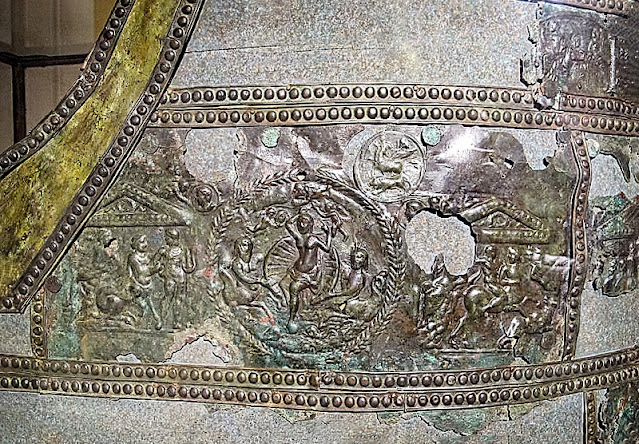Etruscan bronze chariot depicting scenes from the life of Achilles, 4th century BCE, in an exhibit in the Palazzo dei Conservatori at the Musei Capitolini
I ran across these images of this fascinating chariot while researching the Roman cavalry relief in the Capitoline Museum. I've photographed the beautiful Monteleone Etruscan chariot at the Metropolitan Museum of Art in New York dated to 530 BCE but have never seen this one before. Over 300 ancient chariots are known to still exist but only six are reasonably complete.
Surprisingly, the chariot was actually invented to provide a moving platform from which soldiers could shoot at enemies with arrows or javelins before mounted cavalry was introduced into ancient warfare. Scholars think the horses were initially weaker and unable to support a man. They were eventually bred to be stronger until they could be mounted and rode about a millennium and a half after the chariot was invented.
The first reference to chariots was found in Syria and dated to about 1800 BCE. Scholars claim on suitable terrain the chariot was an effective weapon and the number of chariots compared to infantry troops was a good indicator of how effective chariots were. It is estimated in ancient China the ratio was up to 25 infantry soldiers per chariot.
Chariots began to decline in use around the Mediterranean about 500 BCE as horseback riding continued to develop led by the Scythians who attacked the Assyrian empire in the 7th century BCE. The use of phalanx formations with iron weapons also contributed to their disappearance from the battlefield.
The chariot remained a symbol of elite status, however, as this chariot and the Monteleone chariot demonstrate.








Comments
Post a Comment